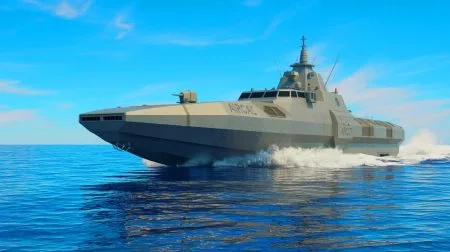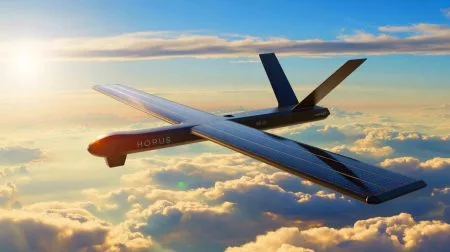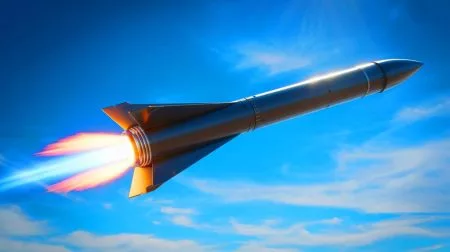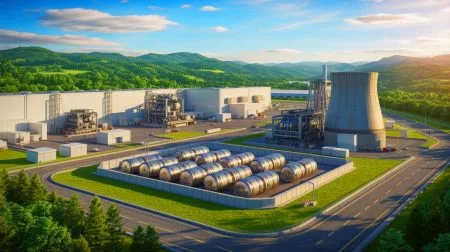| IN A NUTSHELL |
|
The recent delivery of critical components for the ITER project marks a significant achievement in the quest for clean energy. Known as the ‘artificial sun,’ ITER represents a groundbreaking international collaboration to harness fusion energy. With the final shipment of the Correction Coil In-Cryostat Feeder components from China, the project moves one step closer to its ambitious goal. As the world grapples with the challenges of climate change, breakthroughs like these hold the promise of a sustainable energy future.
China Delivers Magnetic Feeder System for ITER
The International Thermonuclear Experimental Reactor (ITER), often called the ‘artificial sun,’ is a monumental scientific endeavor. Its nickname arises from its potential to generate clean, carbon-free energy through fusion reactions, akin to the sun. The recent shipment from China is a crucial part of this endeavor. The magnetic feeder system, developed by the Chinese Academy of Sciences’ Institute of Plasma Physics (ASIPP), is vital for the reactor’s functionality. This system provides the necessary energy and cooling to the reactor magnets. It also transmits essential control signals and acts as a discharge channel for releasing stored magnet energy safely.
Lu Kun, deputy director of ASIPP, emphasized the importance of this system, describing it as China’s most complex ITER procurement package to date. Comprising 31 sets and weighing approximately 1,600 tons, it showcases China’s technological prowess. The ITER project is a collaborative effort funded by the European Union, China, the United States, Japan, South Korea, India, and Russia. This international partnership underscores the global commitment to developing fusion as a sustainable energy source.
Inching Towards First Plasma
Located in Cadarache, France, the ITER is being constructed to produce its first plasma in the coming years. This achievement would represent a pivotal moment in fusion research, as it aims to create a reactor that generates more energy than it consumes. In parallel, China’s Experimental Advanced Superconducting Tokamak (EAST) has made significant strides, recently breaking its own record by maintaining a stable plasma loop for 1,066 seconds.
The ITER project began in the mid-1980s, symbolizing a collaborative effort among seven global partners: the US, Russia, South Korea, Japan, China, India, and the European Union. With an estimated cost exceeding $25 billion, ITER represents a massive investment in clean energy. Unlike nuclear fission, fusion generates no long-lived radioactive waste and emits zero greenhouse gases, offering a safer path to sustainable energy.
Key Components and Collaborations
The delivery of the Correction Coil In-Cryostat Feeder components is a testament to the collaborative spirit of the ITER project. These components, essential for the magnet feeder system, were independently developed and tested by ASIPP. The system itself consists of nine half-ring structures, each measuring 49 feet in diameter and 9.8 feet in height. Such precision engineering highlights the complexity and scale of the ITER project.
Song Yuntao, Vice President of the Hefei Institutes of Physical Science and Director of ASIPP, noted the institute’s extensive collaboration with over 140 research organizations in more than 50 countries. This global network has not only advanced ITER but also helped emerging nations develop their fusion research capabilities. Through these efforts, China has positioned itself as a leader in fusion technology, contributing significantly to the project’s progress.
The Future of Fusion Energy
Fusion energy holds the promise of a cleaner, safer energy future. The ITER project is a critical step towards realizing this vision, with its potential to revolutionize how we generate power. By mimicking the sun’s fusion process, ITER aims to produce vast amounts of energy without the drawbacks of fossil fuels or the risks associated with nuclear fission.
The ongoing progress at ITER and similar projects like EAST highlight the growing momentum in fusion research. As nations invest in this technology, the dream of abundant, sustainable energy becomes increasingly attainable. With each milestone, the world moves closer to a future where fusion energy plays a pivotal role in meeting global energy demands. What challenges and innovations lie ahead as we continue to explore this promising energy source?
Did you like it? 4.6/5 (27)








Wow, they’re building a star in France? That’s stellar! 🌟
How long until ITER is fully operational?
Is it true that fusion energy will solve all our energy problems?
Thank you for the informative article. Fusion energy is fascinating!
Can the technology used in ITER be applied elsewhere?
Sounds like sci-fi becoming reality! 🚀
Why is it called the ‘artificial sun’?
Are there any environmental risks associated with fusion energy?
China’s contribution seems crucial. Will they get a discount on energy? 😜
What are the biggest challenges facing the ITER project right now?
This is awesome, but how much money is being spent? 💸